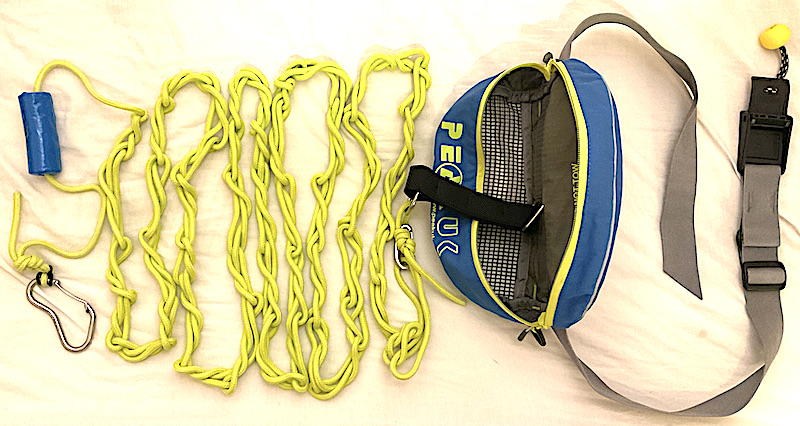5.6 Towing
There are several reasons why we might want to tow other members of our group:
| Reason to tow | Likely towing technique |
|---|---|
| We might need to move a frightened or unsteady paddler out of challenging conditions | Contact tow |
| Someone may have become fatigued at the end of a long day - towing can help keep the group together at a good speed, with the tired paddler continuing to paddle as much as they are able | Towline |
| We may need to move a paddler incapacitated by (e.g.) injury or seasickness back to safety | Rafted tow |
| We might need to keep other paddlers who are performing rescues away from rocks | (we likely won’t cover these more advanced techniques on this course) |
Let’s look at each technique in a little more detail
5.6.1 Contact tows
This is a simple approach to towing, using little or no equipment, to move other paddlers a short distance. In the simplest embodiment, the paddler being towed simply holds onto the rescuer’s decklines whilst they paddle them to safety. As well as providing a connection for the tow, holding the rescuer’s boat provides stability and reassurance.
Some paddlers use short lengths of cord clipped to their decklines as simple aids to contact towing.
This short video covers both approaches:
5.6.2 Using the towline
A towline (Peak, 15m) is shown in the image below:

This towline is worn around the paddler’s waist, just above the spraydeck. A quick release buckle is used to secure the towline around the waist. Pulling the yellow ball releases the towline.
The line is kept inside a zipped bag when not in use. The line is attached to the waist strap by a black shock absorber, which stretches to reduce the peak forces transmitted to the paddler’s body. This makes towing more comfortable, especially in waves.
The line is ‘chain linked’ to reduce it’s length from 15 meters to around 5 meters. This is a good length for many towing scenarios - keeping the paddler being towed close to you reduces the amount that the towed boat can wander around. A metal clip can be used to undo the chain linking to increase the towline length to 15 meters. This is useful if towing downwind in sizable waves to avoid the towed paddler crashing into the back of your boat.
The end of the towline has a section of non-chain-linked line for use in rafted tows and a float to stop the karabiner sinking. This towline has been retrofitted with a Whetman Kraken karabiner - these karabiners are easy to clip onto decklines, strong and corrosion resistant.
It’s worth thinking about how and where to clip the towline on. We typically clip to the boat’s decklines, as these are the strongest attachment points. It’s better to clip the karabiner with the gate facing up rather than down, as this reduces its propensity to unclip itself.

5.6.3 Rafted tows
A paddler incapacitated by injury (e.g. shoulder dislocation) or seasickness may not be stable enough to be towed alone. Instead, we raft the incapacitated paddler up with another group member, who can hold them upright and keep an eye on them. The towline is passed under the assistant’s decklines and clipped onto the victim’s decklines. This arrangement enables the assistant to slide forward to unclip the tow if needed.

Towing a raft of two boats any distance is clearly going to be hard work, and it may make sense to involve another paddler in the tow. The simplest approach is for the second towing paddler to clip onto the front of the first towing paddler’s boat, so that the boats are all towed inline.
